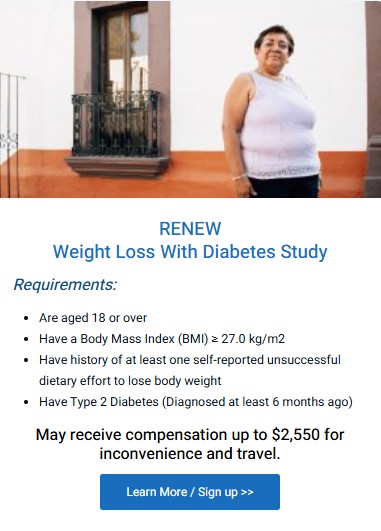
How To Lose Weight with Type 2 Diabetes: What Really Works & Why It’s Difficult
Living with type 2 diabetes and struggling with weight loss? You’re not alone. Over 30 million Americans manage type 2 diabetes, and approximately 80% of people with diabetes are overweight or obese. If you’ve tried traditional dieting approaches without lasting success, the problem isn’t your willpower—it’s the unique metabolic challenges that diabetes creates.
Weight management with type 2 diabetes requires a different approach than standard weight loss methods. Understanding why diabetes makes weight loss more difficult and implementing targeted strategies can finally help you achieve sustainable results.
Why Weight Loss is Harder with Type 2 Diabetes
Type 2 diabetes fundamentally changes how your body processes food and stores energy. Insulin resistance, the hallmark of type 2 diabetes, makes your cells less responsive to insulin, leading to higher blood sugar levels and increased fat storage. Many diabetes medications can also promote weight gain, creating a frustrating cycle where managing your blood sugar seems to work against your weight loss goals.
The metabolic changes associated with diabetes affect your hunger hormones, making you feel hungrier more often. Additionally, blood sugar fluctuations can trigger cravings for high-carbohydrate foods, making it challenging to stick to a healthy eating plan.
Evidence-Based Strategies for Diabetic Weight Loss
Here are the most effective, research-backed approaches for losing weight with type 2 diabetes:
- Low-Carbohydrate Eating Plans – Reducing carb intake to improve blood sugar control and promote fat burning
- Intermittent Fasting – Strategic eating windows to enhance insulin sensitivity and metabolic flexibility
- High-Protein Diet Approach – Increasing protein to stabilize blood sugar and preserve muscle mass
- Medication Optimization – Working with doctors to adjust diabetes medications that may hinder weight loss
- Strength Training and Resistance Exercise – Building muscle to improve insulin sensitivity and metabolism
- Continuous Glucose Monitoring for Weight Loss – Using real-time data to optimize food choices
- Stress Management and Sleep Optimization – Addressing hormonal factors that affect weight and blood sugar
- Clinical Research Opportunities – Exploring investigational treatments through supervised medical studies
1. Low-Carbohydrate Eating Plans
What it involves: Reducing daily carbohydrate intake to 50-130 grams per day while increasing protein and healthy fats. This approach involves eliminating or significantly reducing refined sugars, white bread, pasta, rice, and starchy vegetables like potatoes. Instead, you’ll focus on non-starchy vegetables (broccoli, spinach, cauliflower), lean proteins (chicken, fish, tofu), healthy fats (avocado, olive oil, nuts), and small portions of complex carbohydrates from sources like quinoa or sweet potatoes. The diet requires careful meal planning, reading nutrition labels to track carb content, and working closely with your healthcare provider to adjust diabetes medications as your carbohydrate intake changes.
Why it works for diabetes: Lower carbohydrate intake directly reduces blood sugar spikes, improving insulin sensitivity and promoting fat burning. Studies show that low-carb diets can lead to significant weight loss and improved blood sugar control in people with type 2 diabetes.
How to implement: Focus on non-starchy vegetables, lean proteins, nuts, seeds, and healthy oils. Gradually reduce refined carbs, sugary foods, and starchy vegetables while monitoring blood glucose levels closely with your healthcare provider.

2. Intermittent Fasting
What it involves: Cycling between periods of eating and fasting, such as the 16:8 method (eating within an 8-hour window daily), the 5:2 approach (eating normally 5 days, restricting calories 2 days), or alternate-day fasting. The most popular approach for beginners is time-restricted eating, where you might eat between 12 PM and 8 PM daily, fasting for the remaining 16 hours. During eating windows, you consume regular, balanced meals focused on whole foods. During fasting periods, you can have water, black coffee, plain tea, and other non-caloric beverages. This method requires careful coordination with diabetes medications and frequent blood sugar monitoring, especially when starting.
Why it works for diabetes: Intermittent fasting can improve insulin sensitivity, reduce inflammation, and promote weight loss by extending periods when your body burns stored fat for energy.
How to implement: Start with a 12-hour eating window and gradually extend fasting periods. Always consult your doctor before beginning intermittent fasting, especially if you take diabetes medications that could cause low blood sugar.
3. High-Protein Diet Approach
What it involves: Increasing protein intake to 25-30% of total daily calories while maintaining balanced nutrition. For most adults with type 2 diabetes, this translates to consuming 1.2-1.6 grams of protein per kilogram of body weight daily. This approach involves strategically timing protein consumption throughout the day, incorporating high-quality protein sources at each meal and snack, and balancing protein with appropriate amounts of healthy fats and complex carbohydrates. The diet emphasizes lean meats, fish, eggs, dairy products, legumes, nuts, and seeds while maintaining portion control and monitoring blood glucose responses to different protein sources.
Why it works for diabetes: Protein helps stabilize blood sugar levels, increases satiety, and preserves muscle mass during weight loss. This approach can reduce hunger and cravings while supporting metabolic health.
How to implement: Include lean protein sources at each meal, such as fish, poultry, eggs, Greek yogurt, and legumes. Aim for 20-30 grams of protein per meal to maximize benefits.
4. Medication Optimization
What it involves: Working with your healthcare provider to evaluate your current diabetes medications and identify opportunities to switch to weight-neutral or weight-loss-promoting alternatives. This process includes a comprehensive review of your medication history, current blood sugar control, and weight loss goals. Your doctor may consider adjusting dosages, timing, or switching to different drug classes such as GLP-1 receptor agonists (like semaglutide or liraglutide), SGLT2 inhibitors (like empagliflozin), or ensuring you’re on an optimal dose of metformin. The optimization process requires regular monitoring of blood sugar levels, kidney function, and other health markers while making gradual changes to avoid blood sugar fluctuations.
Why it works for diabetes: Some diabetes medications promote weight gain, while others are weight-neutral or even support weight loss. Optimizing your medication regimen can remove barriers to successful weight management.
How to implement: Schedule a comprehensive medication review with your endocrinologist or primary care physician. Discuss weight-neutral or weight-loss-promoting options like metformin, GLP-1 receptor agonists, or SGLT2 inhibitors.

5. Strength Training and Resistance Exercise
What it involves: Regular resistance training 2-3 times per week, focusing on major muscle groups through exercises that challenge your muscles against resistance. This includes bodyweight exercises (squats, push-ups, lunges, planks), free weights (dumbbells, barbells), resistance bands, or weight machines. A typical session lasts 30-45 minutes and targets different muscle groups on different days (upper body, lower body, core). The program should progress gradually, starting with lighter weights or easier variations and increasing intensity over 6-8 weeks. Proper form is crucial to prevent injury, so consider working with a certified trainer initially, especially if you’re new to strength training or have diabetes-related complications.
Why it works for diabetes: Muscle tissue is metabolically active and improves insulin sensitivity. Building lean muscle mass increases your resting metabolic rate, helping you burn more calories even at rest.
How to implement: Start with bodyweight exercises like squats, push-ups, and planks. Progress to free weights or resistance bands. Even 20-30 minutes twice weekly can produce significant benefits.
6. Continuous Glucose Monitoring for Weight Loss
What it involves: Using a continuous glucose monitor (CGM) device that provides real-time blood sugar readings every few minutes throughout the day and night. The small sensor, typically worn on your arm or abdomen, connects to a smartphone app that displays glucose trends, spikes, and patterns. You’ll use this data to identify which specific foods, meal timing, portion sizes, and activities cause blood sugar elevations that can promote fat storage. This involves logging meals, noting exercise timing, tracking sleep patterns, and correlating these activities with your glucose responses to create a personalized nutrition and lifestyle plan. Most CGMs can be worn for 10-14 days and provide valuable insights for optimizing your diet for both blood sugar control and weight loss.
Why it works for diabetes: Real-time glucose data helps you identify which foods cause blood sugar spikes that can promote fat storage. You can optimize your diet based on your individual glucose responses.
How to implement: Work with your healthcare provider to get a CGM prescription. Use the data to modify portion sizes, meal timing, and food choices for better glucose control and weight management.
7. Stress Management and Sleep Optimization
What it involves: Implementing daily stress-reduction techniques such as meditation, deep breathing exercises, yoga, or mindfulness practices for 10-20 minutes daily, combined with establishing consistent sleep hygiene habits to achieve 7-9 hours of quality sleep nightly. Stress management includes identifying stress triggers, developing healthy coping mechanisms, and potentially working with a counselor or therapist. Sleep optimization involves creating a consistent bedtime routine, maintaining a cool, dark sleeping environment, limiting screen time 1-2 hours before bed, avoiding caffeine after 2 PM, and establishing regular wake and sleep times even on weekends. This approach may also include relaxation techniques like progressive muscle relaxation, journaling, or engaging in hobbies that promote relaxation.
Why it works for diabetes: Chronic stress and poor sleep worsen insulin resistance and increase cortisol levels, making weight loss more difficult. Quality sleep and stress management improve hormone balance and metabolic function.
How to implement: Practice meditation, deep breathing, or yoga. Establish a consistent sleep schedule, limit screen time before bed, and create a relaxing bedtime routine.
8. Clinical Research Opportunities
What it involves: Participating in supervised clinical research studies that test investigational treatments for diabetes-related weight management. This involves working with qualified medical researchers, undergoing screening to determine eligibility, and following a structured study protocol that may include taking investigational medications, attending regular medical visits, completing health assessments, and maintaining detailed health logs. Participants receive comprehensive medical monitoring, laboratory testing, and often compensation for time and travel. The process typically includes informed consent discussions, safety evaluations, and ongoing medical supervision throughout the study duration, which can range from several months to over a year depending on the research objectives.
Why it works for diabetes: Clinical research provides access to cutting-edge treatments that aren’t yet available to the general public, often targeting the specific metabolic challenges faced by people with diabetes. These investigational treatments may work through novel mechanisms that address insulin resistance, hormone regulation, or metabolic pathways in ways that current medications cannot.
How to implement: Research opportunities for diabetes and weight management are available through qualified research centers. Studies typically seek adults with type 2 diabetes who have struggled with traditional weight loss methods. If you’re interested in learning about current clinical research opportunities that might be available in your area, fill out the form below to see if you may qualify for ongoing studies.

Complete the Questionnaire Below
to Submit Your Information for Active or Future Studies
When accepted for a study you may receive compensation for inconvenience and travel.
The Role of Medical Support in Diabetic Weight Loss
Sometimes, despite implementing all the right lifestyle strategies, weight loss remains elusive due to the complex metabolic changes associated with type 2 diabetes. This is where medical intervention and clinical research become valuable options.
Understanding Your Options
If you’ve struggled to lose weight through diet and exercise alone, you’re not alone. Many people with type 2 diabetes face this challenge due to insulin resistance, medication side effects, and metabolic dysfunction. Recognizing when to seek additional medical support is an important step in your weight management journey.
Clinical Research Opportunities
Medical research continues to advance our understanding of diabetes and weight management. Clinical studies are currently investigating new treatments that could help people with type 2 diabetes achieve sustainable weight loss.
For example, current research studies are exploring innovative approaches to diabetic weight management. Some studies are investigating how new medicines affect weight loss in people with obesity and type 2 diabetes who have been unsuccessful with previous dietary efforts. Participants who qualify may receive study-related care at no cost and compensation for their time and participation.
Similarly, other research is testing investigational treatments specifically for adults with type 2 diabetes and weight concerns. This research focuses on people who haven’t been able to lose weight through diet changes alone, providing an option for those who have struggled with traditional approaches.
If you’re interested in learning about current clinical research opportunities that might be available in your area, fill out the form below to see if you may qualify for ongoing studies.
These research opportunities represent hope for people who have tried multiple approaches without success. Clinical studies are conducted with strict safety protocols and medical oversight, offering participants access to cutting-edge treatments while contributing to medical advancement.
When to Consider Professional Help
Consider seeking medical support for weight loss if you:
- Have tried multiple diet and exercise programs without lasting results
- Take diabetes medications that promote weight gain
- Experience frequent blood sugar fluctuations that trigger overeating
- Have other health conditions that complicate weight loss efforts
- Feel overwhelmed managing diabetes and weight simultaneously

Creating Your Personalized Action Plan
Successful weight loss with type 2 diabetes requires a personalized approach that considers your unique medical history, current medications, lifestyle factors, and preferences.
Start with small, sustainable changes: Choose 1-2 strategies from the list above and implement them gradually. Trying to change everything at once often leads to burnout and failure.
Monitor your progress: Track not just weight, but also blood sugar levels, energy, sleep quality, and how you feel overall. Weight loss with diabetes should improve your health markers, not compromise them.
Work with your healthcare team: Your doctor, certified diabetes educator, and registered dietitian can help you create a safe, effective plan tailored to your needs.
Be patient with the process: Weight loss with diabetes often occurs more slowly than standard weight loss, but the results tend to be more sustainable when approached correctly.
The Path Forward
Living with type 2 diabetes doesn’t mean you’re destined to struggle with weight forever. With the right strategies, medical support when needed, and patience with the process, sustainable weight loss is achievable.
Whether through optimized nutrition, strategic exercise, medication adjustments, or participation in clinical research, there are multiple pathways to success. The key is finding the approach that works for your unique situation and sticking with it long enough to see results.
Remember, every small step toward better health matters. Even modest weight loss can significantly improve blood sugar control, reduce medication needs, and enhance your quality of life. The journey may be challenging, but with the right tools and support, you can achieve your weight loss goals while successfully managing your type 2 diabetes.
If traditional approaches haven’t worked for you, don’t give up. Emerging treatments and research opportunities continue to expand options for people with diabetes and weight concerns, offering new hope for achieving lasting health improvements.
Related Posts
Subscribe to Hear About New Trials First
Subscribe to Hear About New Trials First
Subscribe to our newsletter by adding your email and keep up to date with the new studies we are offering as well as study results and more.








